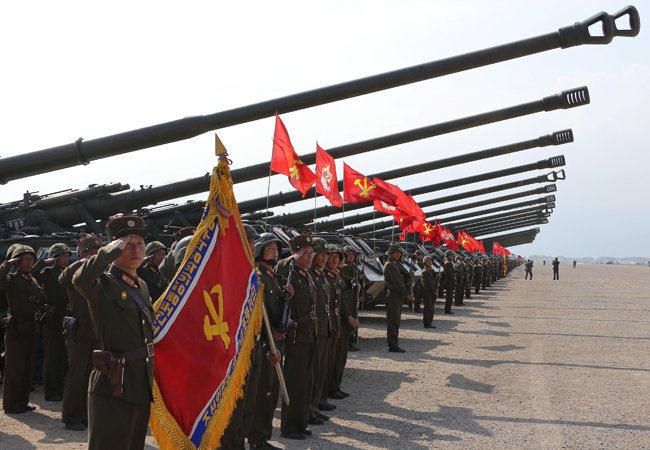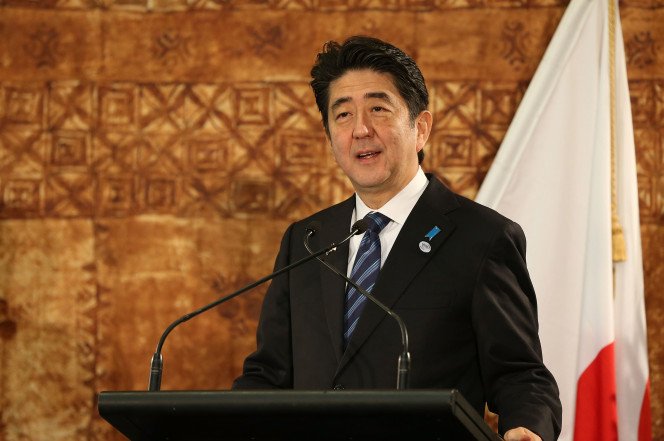 North Korea’s failed missile launch on Saturday marks its fourth straight test that has ended in failure, prompting some to question whether the U.S. is secretly behind these recent flops. The frequency of these failed attempts — this is the second in two consecutive weeks — along with other accompanying circumstances, lends weight to the possibility that the U.S. is covertly interfering with North Korea’s missile program through cyber attacks.
North Korea’s failed missile launch on Saturday marks its fourth straight test that has ended in failure, prompting some to question whether the U.S. is secretly behind these recent flops. The frequency of these failed attempts — this is the second in two consecutive weeks — along with other accompanying circumstances, lends weight to the possibility that the U.S. is covertly interfering with North Korea’s missile program through cyber attacks.
“There is a very strong belief that the U.S. — through cyber methods — has been successful on several occasions in interrupting these sorts of tests and making them fail.”
But determining what role the U.S. has played in influencing these launches is almost impossible, given the general difficulty in finding out the root cause of a failure. What may have been high-tech sabotage, could just as easily have been poor engineering, defective parts, or even bad luck.
Yet North Korea’s repeated blunders don’t quite add up, especially when you take the poor success rate of their missile launches and compare that to expectations.
According to the New York Times, “in the annals of rocketry, experts say, roughly 5 to 10 percent of developmental test flights go awry.”
This would mean that approximately 90 to 95 percent of North Korea’s tests should meet with success. But when we consider the data, it turns out that the opposite is true. As North Korea test fired eight missiles last year, and succeeded in only one of those tests, their fail rate hovered around 88 percent — a dismal figure compared to predictions.
This figure becomes even harder to believe when you take into account the regime’s long history of successful missile manufacturing. As the North was a “reliable maker of missiles in the 1980s, 90s, and into the 2000s,” one might suspect that their knowledge and experience, along with their early successes, would have helped them prevent these sort of consistent failures.
North Korea’s missile program began to run into serious problems when the nation started displaying its Musudan missile, a weapon whose size and range raised alarming concerns for the international community.
 “To date, the proven reach of the Musudan makes it the most threatening potential weapon in the North’s emerging arsenal of missiles that might loft nuclear warheads,” as the article from the New York Times reports.
“To date, the proven reach of the Musudan makes it the most threatening potential weapon in the North’s emerging arsenal of missiles that might loft nuclear warheads,” as the article from the New York Times reports.
That North Korea should run into confounding issues with its program around the same time it displayed its most threatening weapon may of course be coincidental. Yet we know that Obama ramped up an already active U.S. cyber program during his administration, which Trump then inherited when he took office. And we also know that the U.S. has few defenses in place when it comes to preventing North Korea from launching a nuclear strike, or stopping one that has already begun. Even our anti-missile defense systems, which would shoot out incoming missiles before they strike, would likely fail to intercept all of them from hitting their mark.
“We cannot afford to build enough interceptors to engage the quantity of threat missiles which can be presented to us. And even if we could, we can never expect a 100 percent probability of defeating all of them regardless of the techniques used,” retired Adm. Archer Macy said in 2015.
This would presumably encourage the U.S. to devote more resources towards their cyber capabilities, as perhaps the best option it has for dismantling North Korea’s potential to launch nuclear strikes.
But even if the U.S. has developed the ability to interfere with North Korea’s program, such interference comes with its own risks, and could even backfire with horrific consequences. Rather than prevent nuclear fallout, this cyber warfare has the potential of being the very thing that causes it.
Should North Korea detect any U.S. cyber attacks against its system, they may interpret the act as a preemptive strike, and unleash their full military might on South Korea, Japan, and the U.S. military bases stationed in the region. Some experts have estimated that the death toll from this response could total upwards of a million, while also causing over a trillion dollars worth of destruction.
Cyber warfare might escalate tensions between the US and other world powers [Image by Alex Brandon/AP Images]
The other significant threat lies in the possibility of raising tensions with other world powers, such as China and Russia. If the U.S. can eliminate North Korea’s nuclear capabilities through cyber warfare, the argument goes that it might also have the power to apply the same tactic against these other countries as well, effectively nullifying their nuclear arsenals. That would dramatically disturb the balance of power between these nations, and should Vladimir Putin or Xi Jinping feel threatened by that prospect, this could lead to a preemptive strike against the U.S.
This, of course, presents the U.S. with a difficult decision. If it does possess the technology for preventing North Korea from launching a nuclear attack, then utilizing it might be the only method for stopping the dangerous regime. But doing so may also stir up conflict with much more powerful nations, who feel their own security is threatened. Either way, Trump will have some crucial decisions to make in response to North Korea, so as to prevent an escalation of hostilities that may prove catastrophic for the world.

No comments:
Post a Comment